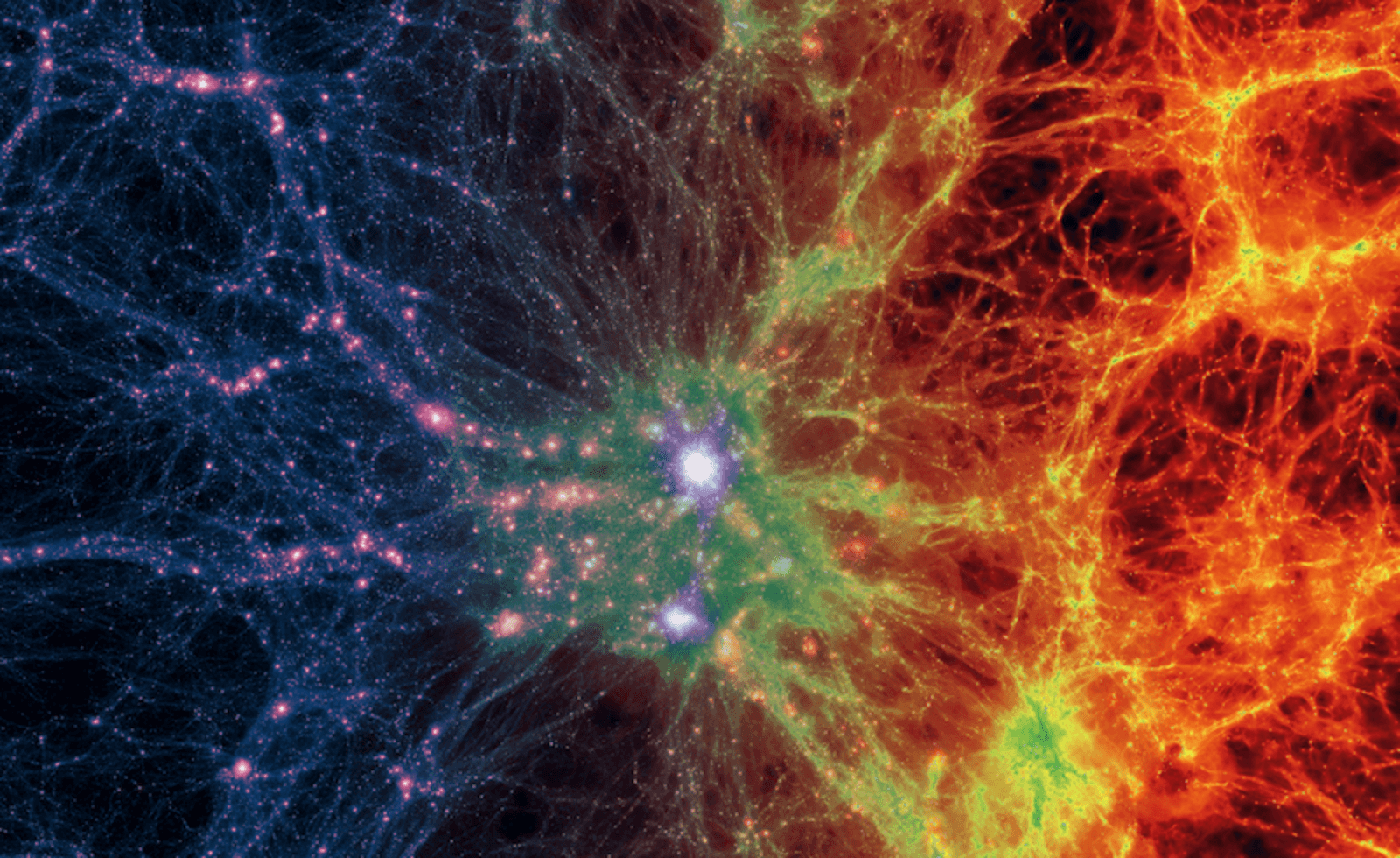Capturing the Growth of Galaxies
by Adam Hadhazy
Illustris harnesses supercomputers to model the formation of cosmic structure

The Author
The Researcher
The universe does not like to sit still. Beneath it all, it's a constant churn of particles and forces interacting on the tiniest scales. The restlessness only scales up from there, all the way on up to massive assemblages of galaxies gravitationally tugging at each other across unfathomable expanses of billions of trillions of miles. More boggling still: the span of time in which this grand, incessant interplay has unfolded—about 13.8 billion years, from the Big Bang until present day.
Accurately capturing the dynamic history of but a small chunk of this cosmic drama is the goal of the Illustris project. The project involves using supercomputers to simulate the evolution of galactic structures within a cube of space spanning potentially hundreds of millions of light-years per side. The international team of researchers behind Illustris has continued collaborating ever since the project's first presentation of results back in 2014, honing their simulation and incorporating ever more physics.
Bit by bit, the simulated fake universe is getting less and less distinguishable from the real thing. This mastering of the recipe, as it were, for a simulated universe is providing key insights into the dynamics of how galaxies influence each other's development, building up from the behaviors of individual stars over their lifetimes.
The Illustris team these days is expanding the power of a second iteration of Illustris, dubbed IllustrisTNG (for "The Next Generation"), first debuted in 2017. More recently, the team has unveiled IllustrisTNG TNG50. Although smaller in volume than other IllustrisTNG simulations, what TNG50 sacrifices in size it makes up for in the details, conveying the structural properties of different types of galaxies and the gas surrounding them with remarkable precision.
"IllustrisTNG produces a more realistic galaxy population since we also improved the galaxy formation model in the simulations," says Mark Vogelsberger, a leader of the Ilustris project and an Associate Professor of Physics at the Massachusetts Institute of Technology (MIT), as well as a member of MIT's Kavli Institute for Astrophysics and Space Research (MKI).
"That means that the new simulation gets much closer to observational data," Vogelsburger continues. "That allows us to understand the physical processes shaping galaxies much better."
Roughly 100 galaxies with the approximate mass of our fairly hefty galaxy, the Milky Way, ultimately populate TNG50. Researchers are keen to sort out how galaxies themselves sort out into the common categories of spiral galaxies (like the Milky Way), elliptical galaxies (older, rounded galaxies), and dwarf galaxies (highly numerous, obviously smaller, and typically disordered structurally compared to their bigger cousins). Over the universe's eons, some general trendlines towards these ends have emerged observationally. Smaller galaxies tend to merge to form larger galaxies, for instance, often triggering fresh rounds of star formation as the galaxies pool available gas and disrupt each other's staid order. Spiral galaxies tend to merge and form elliptical galaxies, wherein star formation typically dies down.
Taking a step back and from a larger perspective, galaxies usually congregate. These gregarious galaxies comprise rich clusters that are connected by galaxy-loaded, thread-like structures, called filaments, overall giving the universe a web- or sponge-like appearance.
The Illustris sims are mirroring much of this large-scale structure formation and the structure formation of individual galaxies. Regarding the latter, a key element is nailing down internal galactic dynamics. Events such as supernovae—the explosive deaths of massive stars and the explosions of small, dense, stellar remnants—sculpt the galaxies interiorly, seeding star-forming material and setting off new bursts of star formation. The supermassive black holes found in the cores of most galaxies play an even more outsized role. The tremendous energies and winds outflowing from these black holes' environs often set the pace for star formation or even shut it down entirely.
The computer code that runs the IllustrisTNG simulations accounts for all this and much, much more. The code itself continues to be honed for optimal running across many thousands of computer cores, for instance on the Cray XC40 "Hazel Hen" supercomputer in Stuttgart, Germany. "We have improved the simulation code to run more efficiently," says Vogelsberger. "This allows us to reach higher numerical resolution."
As good as IllustrisTNG has become, there remains room for improvement yet, going for both bigger (larger volumes) and better (more accurately modeling observed cosmological-scapes). In the meantime, researchers are continuing to comb through the TNG50 results, which in their breadth and depth offer many angles for comparison with—and thus insight into—the genuine article. "There is still lots of data to explore in the simulation," says Vogelsberger.